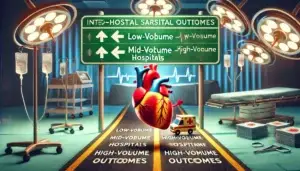
Center Volume and Survival in Inter-Hospital Transfers for Pediatric Cardiac Surgery: No Significant Association
This study analyzed 25,749 pediatric cardiac surgery cases requiring cardiopulmonary bypass (CPB) using the Kids’ Inpatient Database (2016 and 2019) to evaluate whether hospital case volume impacts inpatient mortality for transferred patients. Among 3,511 transferred patients, unadjusted mortality was higher than for direct admissions across low-, mid-, and high-volume centers. However, risk-adjusted inpatient mortality showed no significant differences based on hospital volume, even for high-complexity cases. The findings suggest that transfer decisions should not rely solely on annual case volume.










